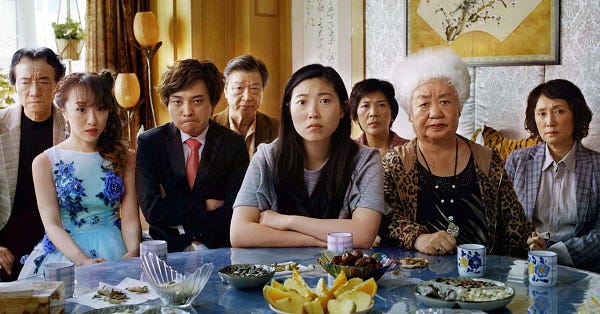annotations INTERVIEW: the world's most beautiful canyon
In which Rebecca Jennings and I annotate her Vox feature on Antelope Canyon
This is annotations, a newsletter in which I annotate a story every two weeks, and also read and write other stuff.
I’m really excited to introduce what I hope will become a semi-regular (ok fine, probably sporadic) thing: an interview with the writer of the featured story, taking place right within the annotations! It’s mostly an excuse for me to find out how other people are reporting and writing and thinking about their own stories behind the scenes, but I think you’ll find it interesting, too.
annotated: “Everyone wants to Instagram the world’s most beautiful canyon. Should they?” by Rebecca Jennings, Vox

Illustration by Andrea D’Aquino for Vox
Rebecca Jennings, a culture reporter for Vox’s The Goods (RIP Racked), published her first longform narrative feature, “Everyone wants to Instagram the world’s most beautiful canyon. Should they?” Using herself as a character, Rebecca covers a huge amount of ground — Instagram and aesthetics, the morality and effects of tourism, the Navajo Nation’s ties to the land — in this multi-layered look at a phenomenon that has probably graced all of our social media feeds at some point.
HERE ARE MY AND REBECCA’S ANNOTATIONS (as always, comments are open, so feel free to reply, add your own annotations, etc. just please don’t fuck up any of the existing annotations in there, especially this time with the interview lol ty)
In addition to the interview within the annotations, which is more focused on the micro of certain lines and structure and how she did it, here’s a short Q&A with Rebecca that leans macro (the interview has been lightly edited for clarity):
JGZ: Tell me how the idea for this story came about. Was it your pitch, or did your editor assign it to you?
RJ: Julia Rubin, my editor, had a friend who’d recently gone to Antelope Canyon and said that the tours are exclusively about getting the exact perfect shot, and how they even tell you to use this one iPhone photo filter. She hadn’t even given me the real idea for the story yet, but right away when she told me that I was like, “I wanna write about this!”
Basically the idea, which was assigned back in March, was that I’d write a longform feature that explored the nature of travel and photography and performance on Instagram, particularly about this thing that was iconic in the digital space before Instagram existed, because it was a Windows desktop background. We also knew that it was on Navajo land, obviously, and that most of the tours didn’t really touch on that at all, so there was a layer of something deeper and more important when, really, we know that people go there to take photos that look really spiritual but are actually highly constructed. That, combined with the fact that seemingly every celebrity and influencer and whoever had recently gone there, and that Instagram tourism has totally exploded around the world, make it feel like the right time for the story.
JGZ: How long did all the stages of this process take you: initial research, the trip itself, additional reporting, and finally writing?
RJ: Planning the trip was the hard part. I knew that as close as we could get to late spring or early summer would be the best chance at seeing the light beams, but those tours book many months in advance. I found a tour (not during peak hours) in early May and another, way more expensive 6-hour tour that would take you to a bunch of canyons and then end up at Antelope during peak hours — that was the only way I could see the light beams with only a month and a half’s notice. Unsurprisingly, the other canyons we visited on that tour were SO much cooler to see, because we were the only ones there (plus, you got to climb stuff!). Also, fun scheduling fact: The only way I sold my editors on my profile of Curvy Wife Guy was that I was already in Arizona for Antelope Canyon, and he happened to have just shot his music video the weekend prior. So they agreed to let me extend the trip in Phoenix for a few days before I flew to Flagstaff.
I did tons of research and interviews before I actually went to Page, obviously. I had a pretty good idea of the major sections of the story before I got there, and then when I got back I had some other deadlines I had to hit. I didn’t pick the story back up and start writing for a couple weeks, which is not the way I’d recommend writing something like this, by the way! The writing process took a long time because of the number of interviews I had to go through and the dozens of pages of notes I took when I was there, which I had to lean on heavily since it wasn’t super fresh in my mind. Plus, I had to do a couple more interviews and research when I got back, because we realized there was a big chunk of the piece missing: Why is this thing beautiful? Why do we have the desire to take photographs?
JGZ: This was your first ~longform narrative feature~, correct? How did it go? Were any parts of the venture surprising, or did you walk away with any new skills, lessons, etc.?
RJ: The main thing I learned about reporting trips is to write as much as you possibly can as soon as you possibly can. Even if it’s garbage, at least it’s something to go on! I knew this going in, of course, but I wish I had done more of it. I actually wrote the original lede to the story at a Navajo trading post restaurant on my way to the Grand Canyon, some of which did make it into the piece, just not at the very beginning.
The other thing is to try to be as organized as possible: back up your shit (photos, notes, interviews) IMMEDIATELY. One thing I did not do well was organize my Google Docs. I have literally, like, a dozen different docs for this piece. I spent so much stupid time going through and Ctrl+F-ing all of them to find one tiny fact.
JGZ: What was the hardest part about working on this story?
RJ: When it became increasingly clear that no one from the Navajo Nation government was going to talk to me, I was really nervous about whether we could do the story, to be honest. I completely understand their hesitation — I understand anyone’s hesitation to talk to a journalist! — particularly when I’m a non-Native journalist from a political website that doesn’t have the name recognition of, like, the New York Times. Finding answers to questions that only someone from the Nation could tell me was difficult, but I was lucky to find sources who had previously worked for it, and others who could speak to the Nation’s approach to tourism.
The other hard part is translating the idea of the piece in your head — where it can safely remain huge and perfect and earth-shattering — and then actually trying to make it be all of those things. This is obviously the central challenge of writing anything.
JGZ: What did you most enjoy about working on this story?
RJ: Any chance I have to write about how Instagram makes me sad is one that I am extremely happy to take. My favorite part was that Julia — with whom I’ve worked in some capacity for five years — trusted me to take on this story, and that Vox was willing to put thousands of dollars behind it. Besides working in video, I’ve never had that kind of practical support for a story before. My other favorite part was that no one was outwardly angry at me after it was published. I was probably way too concerned about that, but the reception was incredible.
Thanks, Rebecca, for not only graciously agreeing to be the first writer interviewed for annotations, but for also tackling my many questions while on VACATION what a queen!
read
“I Wanted to Know What White Men Thought About Their Privilege. So I Asked.” Essential reading by Claudia Rankine. [NYT]
Novelist Mary Gaitskill, slippery and sharp, alternating between the perspectives of an editor accused of sexual harassment and his friend who tries to make sense of it. [New Yorker]
The hundreds of thousands of rape kits that police send away to gather dust, untested, on warehouse shelves. [The Atlantic]
Short, lovely piece about trying to escape the Manhattan blackout this past weekend. [New Yorker]
Soraya Roberts on nostalgia and “vomit culture.” [Longreads]
Men know it’s better to carry nothing. [The Cut]
Amanda Hess finds the voice that lulls her to sleep. [NYT]
The trailer for the upcoming film Hustlers dropped this week, so, naturally, I had to go back and read Jessica Pressler’s feature about “the modern Robin Hood story” on which the movie is based. [The Cut]
Rich Juzwiak on “homophobic”: “With Peck, TNR exposed the wider culture to a facet of gay culture with particularly rough edges and when people found it unsightly, they did their best to make it unseen.” [Jezebel]
On that note, worth clicking through for K. Austin Collins’ thread:


wrote




P.S.
If you’re in New York and looking for something to do next Saturday, may I present for your consideration the Eater Young Guns Summit in Brooklyn? I am told that $60 per ticket is a steal for the amount of food you’ll be getting, along with the panels/talks/sessions/marketplace/etc., so … Also, I’ll be there, say hi if you see me! You’ll know it’s me because I’ll look just like my Twitter avatar:

That’s it for this issue! As always, feel free to reply and let me know what you think (I’ve been bad at keeping up with email, but I’m trying). Now go find someplace cool and stay hydrated, it’s fucking hot out 💦
jgz